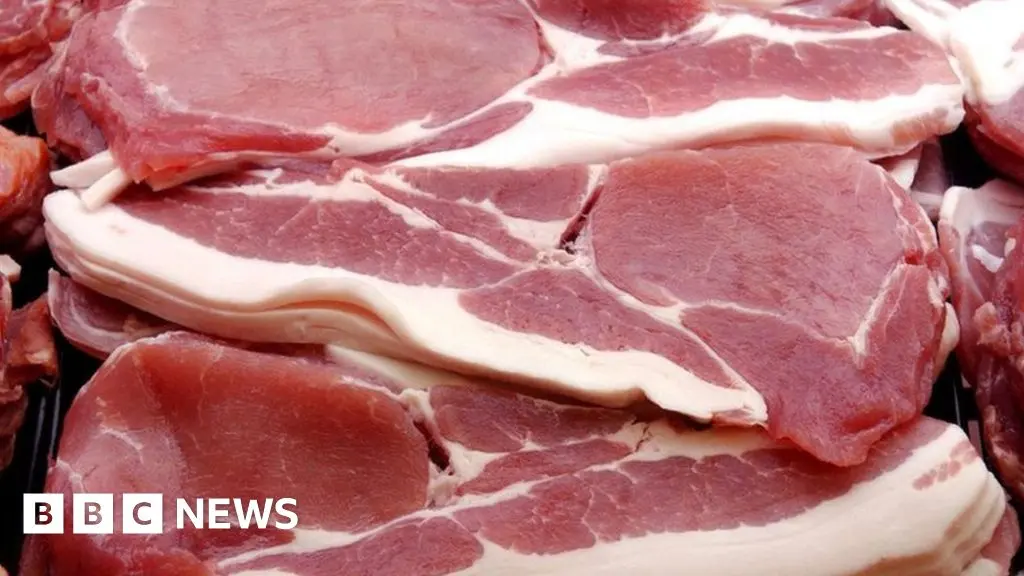Bacon is a popular and versatile meat product that is derived from the belly or back of a pig. It is a staple in many breakfast dishes and adds a delicious savory flavor to various recipes. One of the variations of bacon is smoked bacon.
Smoking Process
Smoked bacon undergoes an additional step in its preparation that sets it apart from regular unsmoked bacon. After being cut from the pig, large amounts of salt and sometimes sugar are added to the meat. This process, known as curing, helps to preserve the bacon and enhance its flavor.
Once the curing process is complete, the bacon can be prepared in different ways. One of the most common methods is smoking. Smoking is a traditional technique that imparts a distinct aroma and taste to the bacon.
Types of Smoking
There are various methods of smoking bacon, but the two most common types are cold smoking and hot smoking.
Cold Smoking: In cold smoking, the bacon is exposed to smoke at a low temperature, usually below 100°F (38°C). This slow and gentle smoking process can take several days or even weeks. Cold smoking does not cook the bacon but infuses it with a smoky flavor, resulting in a rich and distinct taste.
Hot Smoking: Hot smoking involves exposing the bacon to higher temperatures, typically between 120°F (49°C) and 180°F (82°C). The higher heat cooks the bacon while simultaneously infusing it with smoky flavors. Hot smoking is a quicker process compared to cold smoking, usually taking a few hours.
Flavor and Texture
The smoking process not only adds a smoky taste but also enhances the overall flavor profile of the bacon. The combination of salt, sugar, and smoke creates a unique blend of sweet, salty, and savory notes.
Smoked bacon has a slightly denser texture compared to unsmoked bacon. The slow smoking process allows the flavors to penetrate the meat, resulting in a more robust and complex taste. The smoky aroma and the crispy texture when cooked make smoked bacon a favorite among many bacon lovers.
Uses of Smoked Bacon
Smoked bacon is a versatile ingredient that can be used in various dishes. Its rich flavor and smoky notes complement a wide range of recipes.
Some popular uses of smoked bacon include:
- Adding it to breakfast dishes such as bacon and eggs, bacon sandwiches, or bacon-wrapped sausages.
- Incorporating it into salads, pastas, and soups to add depth and complexity.
- Using it as a topping for pizzas or baked potatoes.
- Enhancing the flavor of stews, casseroles, and roasted meats.
Frequently Asked Questions
Q: Is smoked bacon healthier than unsmoked bacon?
A: Smoked bacon and unsmoked bacon have similar nutritional profiles. The main difference lies in the flavor and aroma. However, it is important to consume bacon in moderation due to its high sodium and fat content.
Q: Can I make smoked bacon at home?
A: Yes, it is possible to smoke bacon at home using a smoker or a DIY smoking setup. However, it requires proper knowledge of the smoking process and food safety guidelines to ensure the bacon is safely prepared and cooked.
Q: Can I freeze smoked bacon?
A: Yes, you can freeze smoked bacon. It is recommended to wrap it tightly in freezer-safe packaging to maintain its quality. When ready to use, thaw the bacon in the refrigerator before cooking.
Smoked bacon is a delicious variation of bacon that undergoes a smoking process after curing. The slow smoking process imparts a rich smoky flavor and enhances the overall taste profile of the bacon. Its versatility makes it a popular choice for various recipes and dishes. Whether enjoyed in breakfast meals or incorporated into savory dishes, smoked bacon adds a delightful smoky twist to any culinary creation.
If you want to know other articles similar to What is smoked bacon? | a guide to the process, flavor, and uses you can visit the Smoked bacon category.


Related Articles